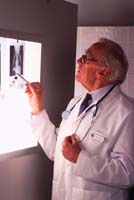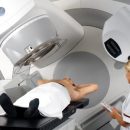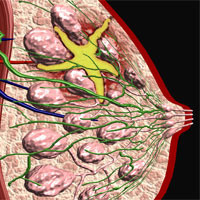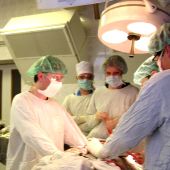Stomach cancer is one of their most common forms of malignant tumors, the frequency of which is recently declining somewhat in many countries, which is associated with a change in the nature of nutrition. However, in a number of countries, stomach cancer remains the most common malignant tumor. What can be the cause and background for the development of this tumor? How it grows and metastasizes? As manifests itself and how the stomach cancer is treated?
Content
The incidence and possible causes of gastric cancer

Stomach Cancer - one of the most commonly encountered malignant tumors. According to the incidence statistics of the gastric cancer ranks first in many countries, in particular, in Scandinavian countries, in Japan, in Ukraine, in Russia and other CIS countries. At the same time, in the United States in the last twenty years there has been a noticeable decrease in the incidence of stomach cancer. A similar trend is marked in France, England, Spain, Israel, etc. Many experts believe that this happened due to improved food storage conditions with wide use of refrigeration facilities, which made it possible to reduce the need for preservatives. In these countries, the consumption of salt, salty and smoked products has decreased, the use of dairy products, environmentally friendly, fresh vegetables and fruits has increased.
The high incidence of stomach cancer in the above countries, with the exception of Japan, according to many authors, is due to the use of foods containing nitrites. Neitzamines are formed from nitrites by transformation in the stomach. The direct local action of nitrosamines is believed to be one of the most important causes of both the gastric cancer and the esophagus cancer. The high incidence of stomach cancer in Japan is related to the consumption of large quantities of smoked fish (containing polycyclic carbohydrates), and not due to the high content of nitrosamines in products.
Currently, the stomach cancer began to be detected more often at a young age, in the age groups of 40-50 years. The largest group among the stomach cancer is adenocarcinoma and undifferentiated cancers. Cancers arise, as a rule, against the background of chronic inflammatory diseases of the stomach.
Precancerous conditions and diseases
Currently, it is proved that in an absolutely healthy stomach, cancer practically does not occur. It is preceded by the so-called, precancer condition: change the properties of cells lining the stomach. Most often, this happens in chronic gastritis with reduced acidity, ulcers and polyps in the stomach. On average, from the prejudice to cancer runs from 10 to 20 years.
Prejudice States include chronic atrophic gastritis, chronic stomach ulcers, adenomatous polyps. Pre-provocative changes in the stomach mucosa include intestinal metaplasia and heavy dysplasia. At the same time, some authors believe that the gastric cancer can develop and de Novo, T.E. without preceding dysplastic and metaplastic changes.
Growth and metastasis of gastric cancer
At the initial stage of cancer in the stomach, a small tumor of less than 2 cm appears. Gradually, it increases, grows deep into (all the layers of the stomach wall) and styling (sprawling on the surface of the stomach).
The gastric cancer is distinguished by the tendency to the early appearance of a large number of metastases: some cancer cells are separated from the original tumor and (for example, together with blood and lymph current) distributed by the body, forming new tumor nodes (metastases). When grazing the stomach metastases, the lymph nodes and the liver are most often affected. In some cases, ovaries, fatty fiber, lungs, leather, bones, etc.
Clinical picture of the disease
The tumor of small sizes most often exists asymptomatic. Only in some cases the patients may have a change in food addictions: for example, they feel disgust for meat, fish and t.D.
As the tumor grows, new symptoms appear:
- feeling of gravity in the stomach after eating, nausea and vomiting;
- violation of the chair (diarrhea, constipation);
- Pain in the upper half of the abdomen, stuffing pains that give in the back (when the tumor spread to the pancreas);
- an increase in the size of the abdomen, the accumulation of fluid in the abdominal cavity (ascites);
- weight loss;
- If the vessel tumor is destruction, gastrointestinal bleeding is possible.
Treatment of stomach cancer
Depending on the stomach cancer stage, there are various treatment methods. The main methods are: operation, chemotherapy and irradiation. Often the best approach to treatment can be the use of two or more methods. The main goal of treatment is the complete disposal of the disease. In the event that complete cure is impossible, therapy is aimed at facilitating the symptoms of the disease, such as disruption of food intake, pain or bleeding.









